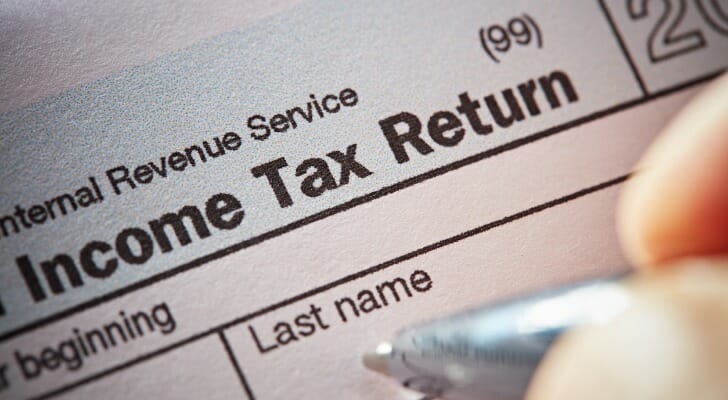Doing your taxes is never considered to be an easy task and for small business owners there are typically even more layers of complexity. Schedule C is a tax form that some small business proprietors use to file their tax returns each year. For those using it, command over Schedule C is an important part of making sure they are compliant with federal regulations and not paying more in taxes than they need to be. If you want help with your small business taxes, consider working directly with an experienced financial advisor who specializes in tax planning and preparation.
What Is Schedule C and Who Should File It?
Schedule C is a tax form for small business owners who are either sole proprietors or have a single-member LLC. The form is titled “Profit or Loss from Business (Sole Proprietorship).” If you are the sole proprietor of a business or have a single-member LLC, you’ll fill out this form when you do your taxes each year. You file this form with IRS Form 1040.
Before you fill out the form, make sure to gather the relevant information and documents. This includes a profit and loss statement, a balance sheet, statements pertaining to any assets you purchased during the previous year (including vehicles and land), inventory information and details on your expenses. You can deduct 50% of your meal expenses that are not entertainment, as well as home office expenses.
What About the Schedule C-EZ?

Like some other tax forms, there is a simplified version of Schedule C known as Schedule C-EZ. You can use this form only if you meet all of the following requirements:
- Had business expenses of $5,000 or less
- Used the cash method of accounting
- Had no inventory during the year
- Didn’t have a net loss from the business for the year
- Only have one business
- Have no employees
- Did not deduct expenses for home office
- Don’t have prior year unallowed passive activity losses from the business
- Not required to file Form 4562, Depreciation and Amortization
The EZ version of Schedule C still requires some of the same information, but it has many fewer lines. Make sure you meet all of the qualifications to use this simplified version of Schedule C before you send it in. If you’re not sure, check with your financial advisor or tax preparer before using it.
What to Know About Completing Schedule C

Filling out Schedule C isn’t difficult but it’s important that each box you fill in is accurate so that your business pays the appropriate amount of tax. Some of the information that you’ll need to have available when filling out your Schedule C includes:
- Business name and industry
- Employer ID number
- Business address
- Receipts for business expenses
- Any inventory records, if applicable
- Business income statement for the tax year
- Business balance sheet for the tax year
- Mileage records for any vehicles the business uses
- Other relevant business information
As you fill out Schedule C you will notice that there are five unique parts. Each of these parts breaks down to include the following information.
- Part I: Where you’ll show your work to calculate the business gross profit.
- Part II: All reporting around business expenses.
- Part III: Calculates costs of goods sold.
- Part IV: Reporting for vehicle-related expenses.
- Part V: Other business expense reporting that doesn’t show up in Part II.
Tips for Filling Out Schedule C
If you have more than one business that qualifies for filing a Schedule C form, you’ll have to file the Schedule C for both of them. For instance, if you run your own landscaping company and also sell handcrafted ceramic garden gnomes in an Etsy shop, you can’t combine the two of them into one Schedule C form. Legally, you have two separate businesses, so you must treat them as such for the purpose of your taxes. This means filing the same form twice.
Another thing to consider is how Schedule C may work for a business owned collectively by a husband-and-wife team. Generally, if two people own a business together they are counted as business partners and must file what is known as a partnership tax return. If a husband and wife own a business together and are both active in the company’s daily operations, though, there is another option.
They can both separately file a Schedule C for the business and split the income and expenses. This is known as a qualified joint venture. Only some states allow you to file like this, so check with your financial advisor or another tax professional to see if it is an option for you.
The Bottom Line
Schedule C is for small business owners who either have a single-member LLC or are sole proprietors of their business. It reports either profit or loss from your business when you file your taxes each year. It requires a good deal of information, so have everything ready when you fill it out. If your business is especially small and uncomplicated, you may qualify to fill out the Section C-EZ form instead. You may want to check with a financial advisor or tax professional to see if that is an option for you.
Tips for Tax Planning
- A financial advisor can help you with all of your tax issues, including filing or planning out the right strategies to reduce your taxable income. Finding the right financial advisor doesn’t have to be hard. SmartAsset’s free tool matches you with up to three vetted financial advisors who serve your area, and you can interview your advisor matches at no cost to decide which one is right for you. If you’re ready to find an advisor who can help you achieve your financial goals, get started now.
- Want to know your likely income tax burden? Plug your information into SmartAsset’s tax calculator to see how much you’ll likely owe come tax season.
Photo credit: © iStock/Bill Oxford, © iStock/scyther5, © iStock/lovelyday12
